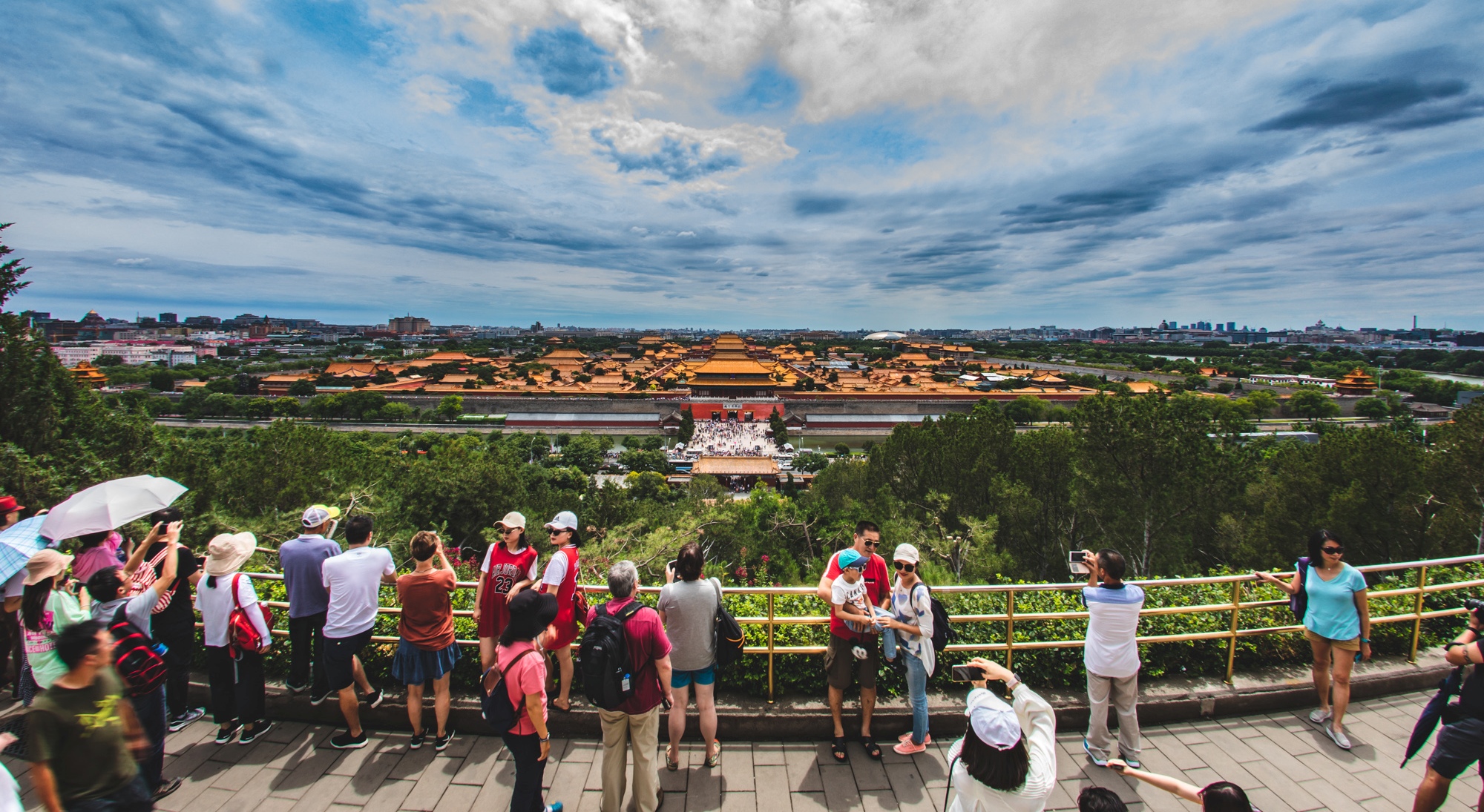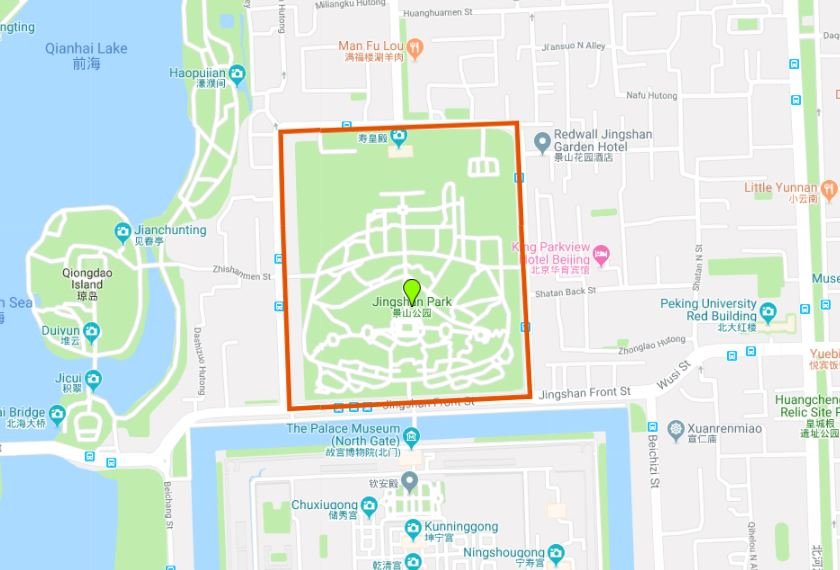Park Life: Everything You Need to Know About Jingshan Park
Life's a park! We take a look at Beijing's most beloved parks, dig into what makes each of them special, and why they're worth your time to explore.
The practical stuff
Name: Jingshan Park 景山公園 (jǐngshān gōngyuán)
Address: 44 Jingshan Xijie (West Gate), Xicheng District 西城区景山西街44号 (西门)
Opening Hours: 6am-9pm (April to October); 6.30am-8pm (November to March). Ticket sales end 30 minutes before the park closes.
Entrance Fee: RMB 2. Tickets available at the South, West, and East Gates of the park or via the 畅游公园 (chàngyóu gōngyuán) WeChat App (Chinese only)
Amenities: Concession stands are located inside the South and West Gates offer a standard selection of drinks, ice cream, and snacks. There are also smaller kiosks on the slopes of Jingshan. Restrooms are available near the East and West Gates.
Known for: The view. It’s only 45.7 meters (150 feet) tall, but the artificial hill known as Jingshan is the tallest point of land inside the Second Ring Road and sits at the geographical center point of the historic city center. A six-minute climb to the top of the hill offers (on good air days) 360-degree views of old and new Beijing. Also, maintained gardens throughout the park are often used for special horticultural exhibits especially in spring and early summer. The lavish peony gardens generally peak in mid-April to early-May (when the park, naturally, raises their admission fees to RMB 5 per person).

A brief history
Formerly an imperial garden, the park opened to the public in 1928. The hill at the center of the park dates back to the early 15th century when the Yongle Emperor [r. 1402-1424] rebuilt Beijing to be the capital of the Ming Dynasty (1368-1644). As workers dug the foundations for Yongle’s new Forbidden City, they needed somewhere to dump the dirt, debris, and bits and pieces of the old Mongolian palace which once occupied the same site where the new palace was being built. Eventually, the hill would consist of a ridge with two smaller “peaks” on each side of the main “summit” (we use these terms loosely) and each of the four sub-peaks and the top is crowned with a pavilion. Originally these pavilions contained small shrines and icons although today all are closed to the public.

The hill was more than just a place to dump rubble from the palace construction site, it also served feng shui. The hill in the back of the palace balances the “River of Golden Water” which flows through the front courtyard of the Forbidden City, blocking harmful influences associated with the north. Some old foreign maps of Beijing refer to the hill as “Coal Hill.” The name is either, depending on your favorite theory, a mistranslation of a popular name for the mound, Beautiful Hill (美山 měishān or “Beautiful Hill” sounding a lot like 煤山 méishān or “Coal Hill”), or a longstanding legend that the hill contained a strategic coal reserve for use by the court in case of siege.
Activities
The hill is a popular place for photographers, especially as the sun sets behind the western hills. It also makes an excellent extension of a visit to the Forbidden City. From the North Gate of the Palace Museum, leave the crowds (more or less) behind, cross under the road, and enter the park through the South Gate. A short but steep climb on the southern slope stairway will afford you an impressive vista over the palace rooftops. The Shouhuang Palace in the northern section of the park is the largest imperial complex along Beijing’s Central Axis, second only to the Forbidden City. Constructed in 1749 and recently renovated and re-opened to the public, once was used by the imperial court for venerating their royal ancestors.

What sets this park apart?
The central location of the park makes it a convenient place for visitors staying in hotels in the Wangfujing/Tiananmen area to get a taste of park life – singing, dancing, tai chi – in the mornings and evenings. Joggers looking for a little elevation running through the flat streets of the city can take advantage of the steps leading to the top of Jingshan for a workout boost. And, of course, the incredible views from the top.
Follow us on our mission to summarize every major Beijing park, right here.
Photos: Uni You, CGTN, Jeremiah Jenne


